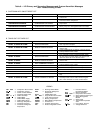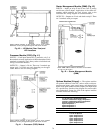
Table 9 — LID Primary and Secondary Messages and Custom Alarm/Alert Messages
with Troubleshooting Guides (cont)
K. CHILLER PROTECT LIMIT FAULTS
Excessive numbers of the same fault can lead to severe
chiller damage. Seek service expertise.
PRIMARY MESSAGE SECONDARYMESSAGE ALARM MESSAGE/PRIMARY CAUSE ADDITIONAL CAUSE/REMEDY
PROTECTIVE LIMIT
HIGH DISCHARGE
TEMP
CMPD [VALUE] exceeded limit of
[LIMIT]*. Check discharge temperature.
Check discharge temperature immediately. Check sen-
sor for accuracy; check for proper condenser flow and
temperature; check oil reservoir temperature. Check
condenser for fouled tubes or air in chiller. Check for
proper guide vane actuator operation.
PROTECTIVE LIMIT
LOW REFRIGERANT
TEMP
ERT [VALUE] exceeded limit of [LIMIT]*.
Check evap pump and flow switch.
Check for proper amount of refrigerant charge; check
for proper water flow and temperatures. Check for
proper guide vane actuator operation.
PROTECTIVE LIMIT
HIGH MOTOR
TEMPERATURE
MTRW [VALUE] exceeded limit of
[LIMIT]*. Check motor cooling and
solenoid.
Check motor temperature immediately. Check sensor
for accuracy. Check for proper condenser flow and
temperature. Check motor cooling system for restric-
tions. Check motor cooling solenoid for proper opera-
tion. Check refrigerant filter.
PROTECTIVE LIMIT
HIGH BEARING
TEMPERATURE
MTRB [VALUE] exceeded limit of
[LIMIT]*. Check oil cooling control.
Check for throttled oil supply isolation valves. Valves
should be wide open. Check oil cooler thermal expan-
sion valve. Check sensor accuracy. Check journal and
thrust bearings. Check refrigerant filter. Check for ex-
cessive oil sump level.
PROTECTIVE LIMIT LOW OIL PRESSURE
OILPD [VALUE] exceeded limit of
[LIMIT]*. Check oil pump and
transducer.
Check power to oil pump and oil level. Check for dirty
filters or oil foaming at start-up. Check for thermal
overload cutout. Reduce ramp load rate if foaming
noted.
NOTE: This alarm is not related to pressure switch
problems.
Low Oil Pressure [OPEN]*. Check oil
pressure switch/pump and 2C aux.
Check the oil pressure switch for proper operation.
Check oil pump for proper pressure. Check for exces-
sive refrigerant in oil system.
PROTECTIVE LIMIT NO MOTOR CURRENT
CA P Loss of Motor Current: Check
sensor.
Check wiring: Check torque setting on solid-state
starter. Check for main circuit breaker trip. Check
power supply to PSIO module.
PROTECTIVE LIMIT POWER LOSS
V P Power Loss: Check voltage
supply.
Check 24-vdc input sensor on the SMM; adjust potenti-
ometer if necessary. Check transformers to SMM.
Check power to PSIO module. Check distribution bus.
Consult power company.
PROTECTIVE LIMIT LOW LINE VOLTAGE
V P [VALUE] exceeded limit of
[LIMIT]*. Check voltage supply.
PROTECTIVE LIMIT HIGH LINE VOLTAGE
V P [VALUE] exceeded limit of
[LIMIT]*. Check voltage supply.
PROTECTIVE LIMIT
LOW CHILLED
WATER FLOW
EVFL Flow Fault: Check evap pump/flow
switch.
Perform pumps Control Test and verify proper switch
operation. Check all water valves and pump operation.
PROTECTIVE LIMIT
LOW CONDENSER
WATER FLOW
CDFL Flow Fault: Check cond pump/
flow switch.
PROTECTIVE LIMIT
HIGH CONDENSER
PRESSURE
High Cond Pressure [OPEN]*. Check
switch, oil pressure contact, and water
temp/flow.
Check the high-pressure switch. Check for proper con-
denser pressures and condenser waterflow. Check for
fouled tubes. Check the 2C aux. contact and the oil
pressure switch in the power panel. This alarm is not
caused by the transducer.
High Cond Pressure [VALUE]: Check
switch, water flow, and transducer.
Check water flow in condenser. Check for fouled
tubes. Transducer should be checked for accuracy.
This alarm is not caused by the high pressure switch.
PROTECTIVE LIMIT
1CR AUX CONTACT
FAULT
1CR AUX Starter Contact Fault: Check
1CR/1M aux contacts.
1CR auxiliary contact opened while chiller was run-
ning. Check starter for proper operation.
PROTECTIVE LIMIT
RUN AUX CONTACT
FAULT
RUN AUX Starter Contact Fault Check
1CR/1M aux contacts.
Run auxiliary contact opened while chiller was running.
Check starter for proper operation.
PROTECTIVE LIMIT CCN OVERRIDE STOP
CHIL S S CCN Override Stop while
in LOCAL run mode.
CCN has signaled chiller to stop. Reset and restart
when ready. If the signal was sent by the LID, release
the Stop signal on STATUS01 table.
PROTECTIVE LIMIT
SPARE SAFETY
DEVICE
SRP PL Spare Safety Fault: Check
contacts.
Spare safety input has tripped or factory-installed
jumper not present.
PROTECTIVE LIMIT
EXCESSIVE MOTOR
AMPS
CA P [VALUE] exceeded limit of
[LIMIT]*. High Amps; Check guide vane
drive.
Check motor current for proper calibration. Check
guide vane drive and actuator for proper operation.
PROTECTIVE LIMIT
EXCESSIVE COMPR
SURGE
Compressor Surge: Check condenser
water temp and flow.
Check condenser flow and temperatures. Check con-
figuration of surge protection.
PROTECTIVE LIMIT STARTER FAULT
STR FLT Starter Fault: Check starter
for fault source.
Check starter for possible ground fault, reverse rota-
tion, voltage trip, etc.
PROTECTIVE LIMIT
STARTER OVERLOAD
TRIP
STR FLT Starter Overload Trip: Check
amps calibration/reset overload.
Reset overloads and reset alarm. Check motor current
calibration or overload calibration (do not field-calibrate
overloads).
PROTECTIVE LIMIT
TRANSDUCER
VOLTAGE FAULT
V REF [VALUE] exceeded limit of
[LIMIT]*. Check transducer power
supply.
Check transformer power (5 vdc) supply to trans-
ducers. Power must be 4.5 to 5.5 vdc.
*[LIMIT] is shown on the LID as the temperature, pressure, voltage, etc., set point predefined or selected by the operator as an override, alert, or alarm
condition. [VALUE] is the actual temperature, pressure, voltage, etc., at which the control tripped. [OPEN] indicates that an input circuit is open.
NOTE: See Legend on page 68.
73


















